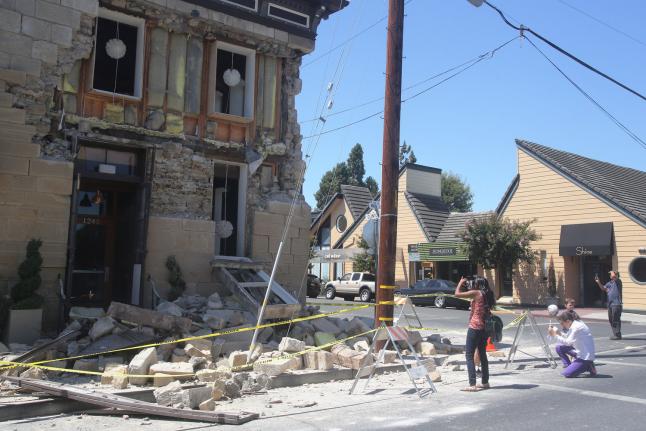USGS Report Raises Chance Of Mega-Quake Hitting California In Next 30 Years

LOS ANGELES, March 11 (UPI) — There’s a slightly higher chance than experts previously thought that a mega-quake, an earthquake of 8.0 magnitude or greater, will hit California.
In a report released by the U.S. Geological Survey on Tuesday, scientists raised the chance of a mega-earthquake hitting California within the next 30 years from 4.7 percent to 7 percent.
Researchers with USGS augmented their forecast models to account for the realization that fault lines are interconnected systems — not isolated entities.
“The new likelihoods are due to the inclusion of possible multi-fault ruptures, where earthquakes are no longer confined to separate, individual faults, but can occasionally rupture multiple faults simultaneously,” explained Ned Field, lead report author and USGS scientist. “This is a significant advancement in terms of representing a broader range of earthquakes throughout California’s complex fault system.”
More specifically, the updated forecasts were informed by the fact that several of the largest West Coast earthquakes in recent decades have been observed jumping faults — one triggering the other, resulting in simultaneous jolts.
The Third Uniform California Earthquake Rupture Forecast (UCERF3) includes model data from the studies of more than 350 segments of the San Andreas Fault, which stretches 810 miles from Northern California’s Humboldt County to the Mexican border.
While the forecast puts the chance of a mega-quake at just 7 percent, the odds of a 5- or 6-magnitude quake are much higher. There’s a 95-plus percent chance that a 6.5-magnitude quake will strike Northern California in the next 30 years. The odds are roughly the same for the Los Angeles region.
“The message to the average citizen hasn’t changed. You live in earthquake country, and you should live every day like it’s the day a Big One could hit,” Field told the Los Angeles Times. “But what it really does help us do is refine our estimates for those designing critical facilities: hospitals, schools, bridges.”






